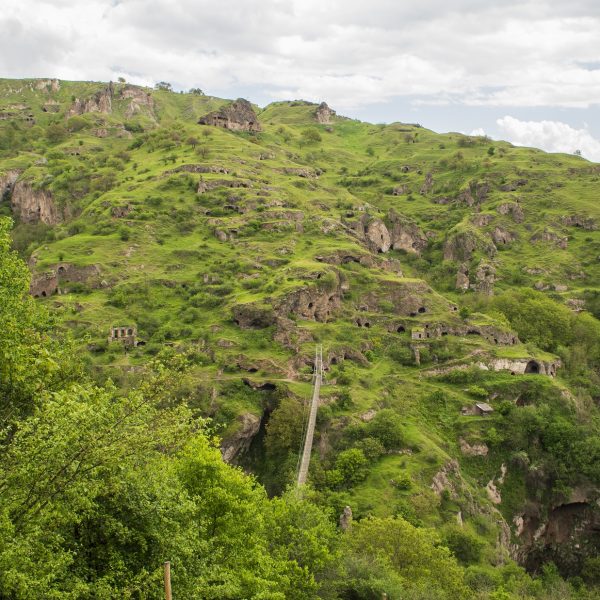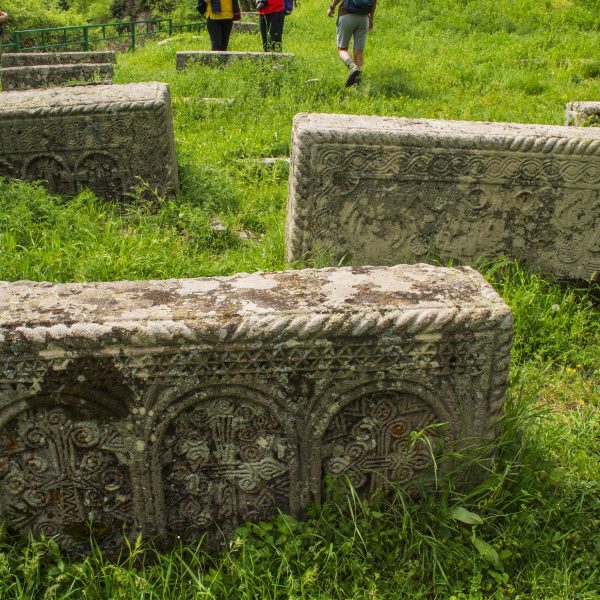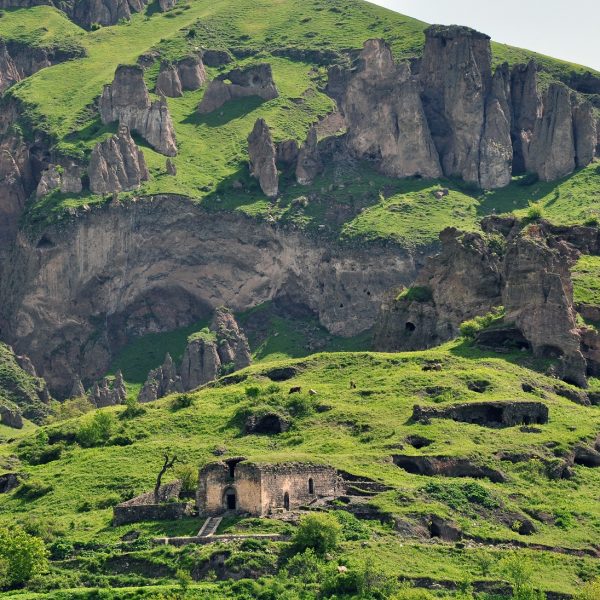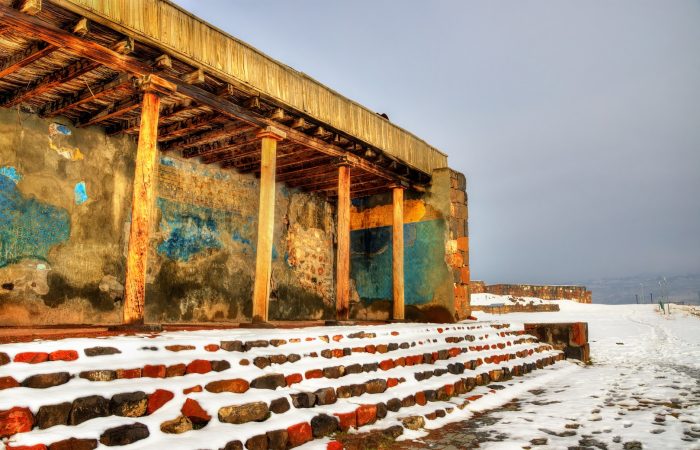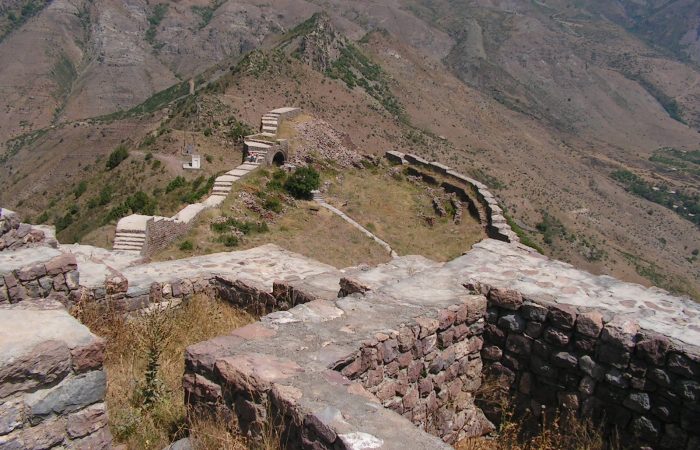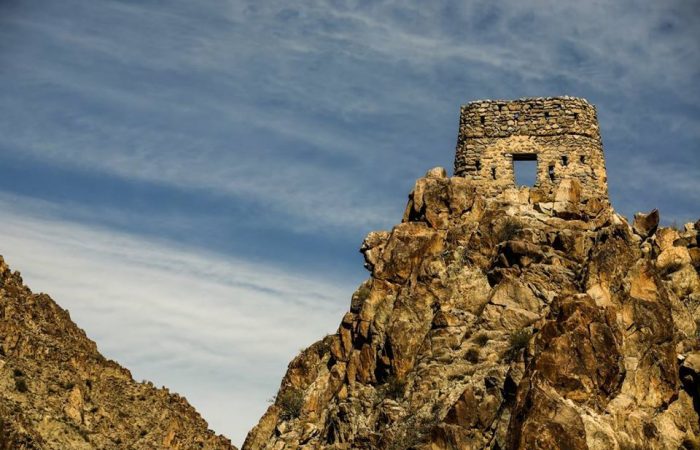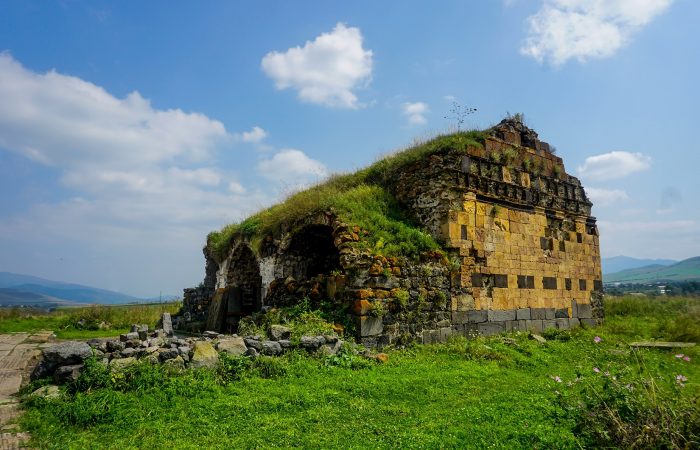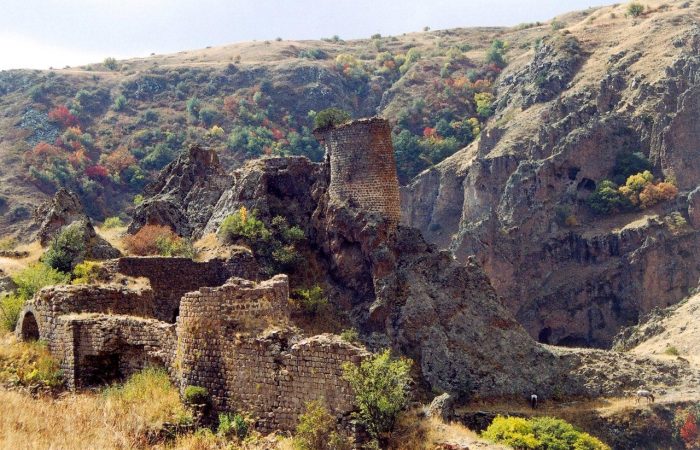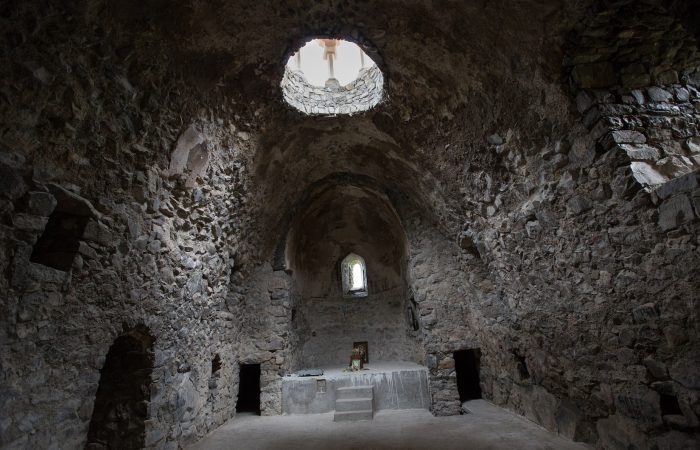Goris: City’s Establishment
The city was established in 1870 and was then converted into the center of Zangezur (Syunik) region. The city’s plan was drawn upon the initiative of Stratski, the then governor of Zangezur region. And the location of the city was chosen by melik Manuchar (melik was a hereditary noble Armenian title).The governor’s father-in-law’s son then studied in the last course of the architectural faculty. One summer he was visiting his sister, whose husband (Stratski) advised to consider the planning of the newly established city as a topic for his diploma work. The governor then added that as long as he remained the governor of the region he would take care that the city be built based on his plan. Within a short period of time New Goris was built upon the young architect’s plan.
One interesting thing about the city is that for a rather long time the city was believed to be planned by foreign architects, particularly German or French. Perhaps it has to do with the city’s outstanding design.
Goris is located 1250-1520 meters above sea level. It received a status of a city in 1885. The city covers an area of 500 hectares and the number of the population is approximately 18000.
Goris: Early History
In the place of the present-day city there was a settlement and it is believed to be inhabited since the Stone Age. The name Goris was first mentioned in an Urartian inscription left by Urartian King Rusa I (735-710 BC). The inscription was found in Tsovinar Village (Gegharkunik province), and it recounts about 23 lands the king had captured. Among them was the land of “Goristsa,” which according to the scientists is the same Goris.
A milestone featuring an inscription in Aramaic was found in Goris. The inscription belongs to Armenian King Artashes II (189-160 BC).
Goris: Etymology
Goris has been called differently in different periods. Among the given names were Geryusi, Gorayk, Gores, Hin Kyores (Old Kyores), Kyuris and so on.
The naming of the city is believed to mean “rocky place.” It is thought to originate from an Indo-European parent language. In this regard, “gor” means “rock” and “is, es” means “to be.”
Goris: Climate
Summers in Goris are usually warm. The average July temperature is 19 degrees Celsius. Winters are usually mild and snowy. The average January temperature is (-1.3) degrees Celsius.
Goris: The Theater
The Theater of Goris was established in 1888. Nevertheless, it is supposed that the Theater of Goris has an earlier history, which goes back to hundreds of years. This supposition is explained by the cave theater found in Goris, which the locals call “amphitheater.” The stage and the seats of the amphitheater are preserved until this day.
The theater established in 1888 functioned until 1960. It became a state theater in 1936. The theater was reopened in 1985.
Goris: Historical-Cultural Monuments
Saint Grigor Lusavorich Church
Saint Grigor Lusavorich (Gregory the Illuminator) Church was built within 1897-1904. The construction of the church is believed to be accomplished by Armenian-Italian Tigran Poghosyan. The church was built upon the initiative of Melik Hyuseinyans. The church was consecrated and opened in 1904. In 1995 the church was closed and remained so until the reconstruction works were launched in 1995. The church was reopened on December 20, 1997. It has a cruciform central dome structure. The church’s dome has not been built. Other than that, it has two entries – western and southern. On both sides of the Main Altar there are two vestries. To the west of the church there once was a wooden belfry, which was later ruined.
The church is a functioning one.
The Citadel of Dzagedzor or Haband
According to Stepanos Orbelyan, the Fortress of Dzagedzor was built by Patriarch Dzag. Dzagedzor means the “Canyon of Dzag.”
The Church of Saint Hripsime
Some people believe it’s called Holy Mother of God Church. Anyway, the church is located in the center of Old Goris and is supposed to be built in the 4th century in the place of a pagan temple. The church was reconstructed in the 16th century. Restoration works are currently launched.
The Chapel of Meliks
The chapel represents a vaulted single-nave basilica. It once served as a sepulcher for the meliks of Old Goris. Melik Ohan, Melik Seyin, Melik Baghr are some of the prominent meliks buried there. Around the chapel there is a medieval graveyard, which includes various valuable tombstones.
World War II Victim Memorials
There is one spring memorial dedicated to the Zangezur people who died in World War II. The memorial was erected in 1946 and the architect was Rafael Israelyan.
There is also another memorial erected in the memory of Goris people who died in World War II.
Garegin Nzhdeh Moument
The Monument to Garegin Nzhdeh, who has played an immense role in the history of Armenia, is located in the square of Avangard district. It was opened on May 28 1991.
Lastly, those visiting the city of Goris should know that this visit is usually accompanied with a visit to some of the most beautiful places of Armenia, particularly of Syunik province. So make sure you arrange your time in a way as not to be in a hurry and fully explore the beauties of Syunik province. Among those “things to see” sites are Tatev Monastery, Khndzoresk Village, Vorotan River Canyon and Karahunj.

